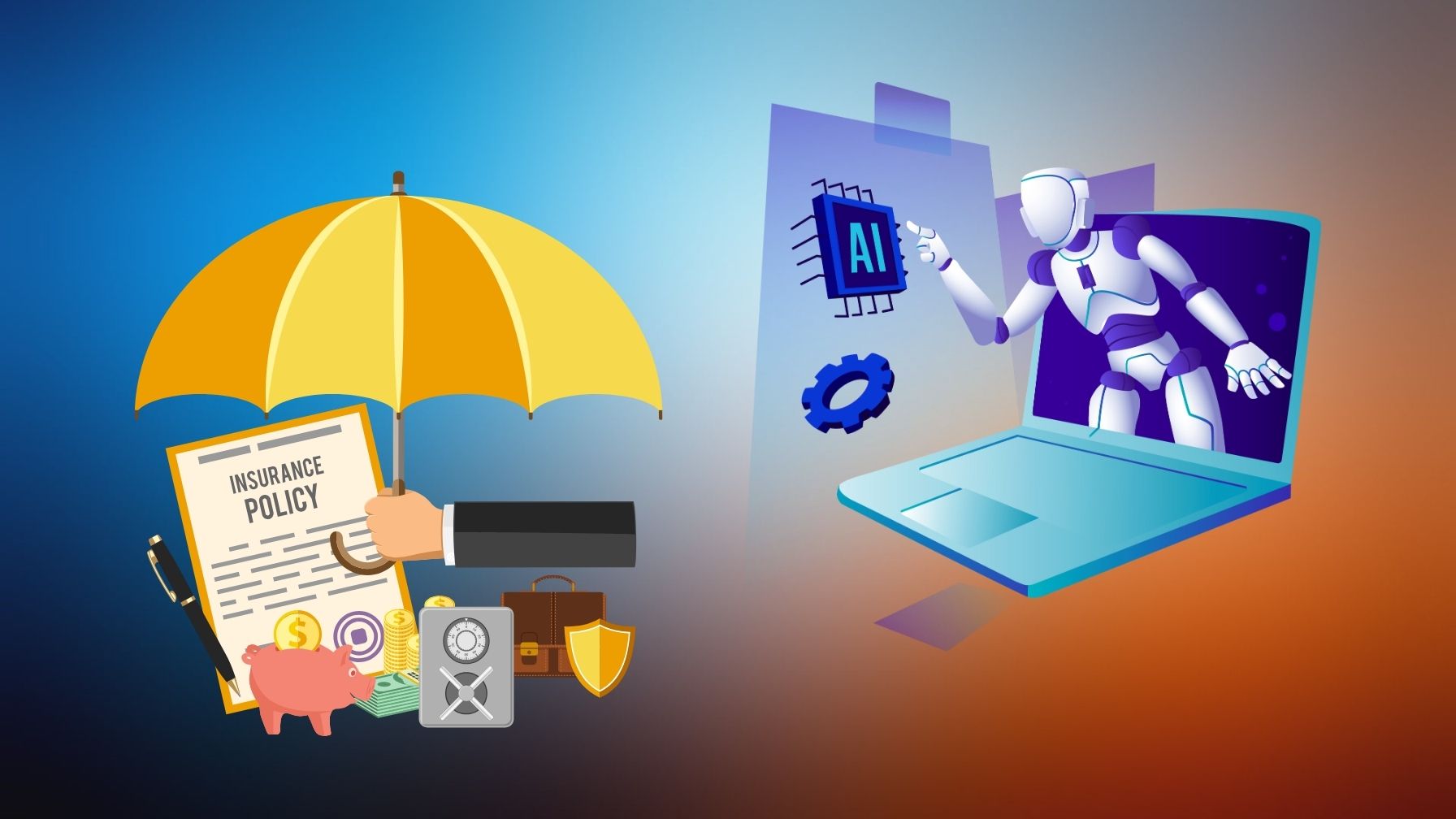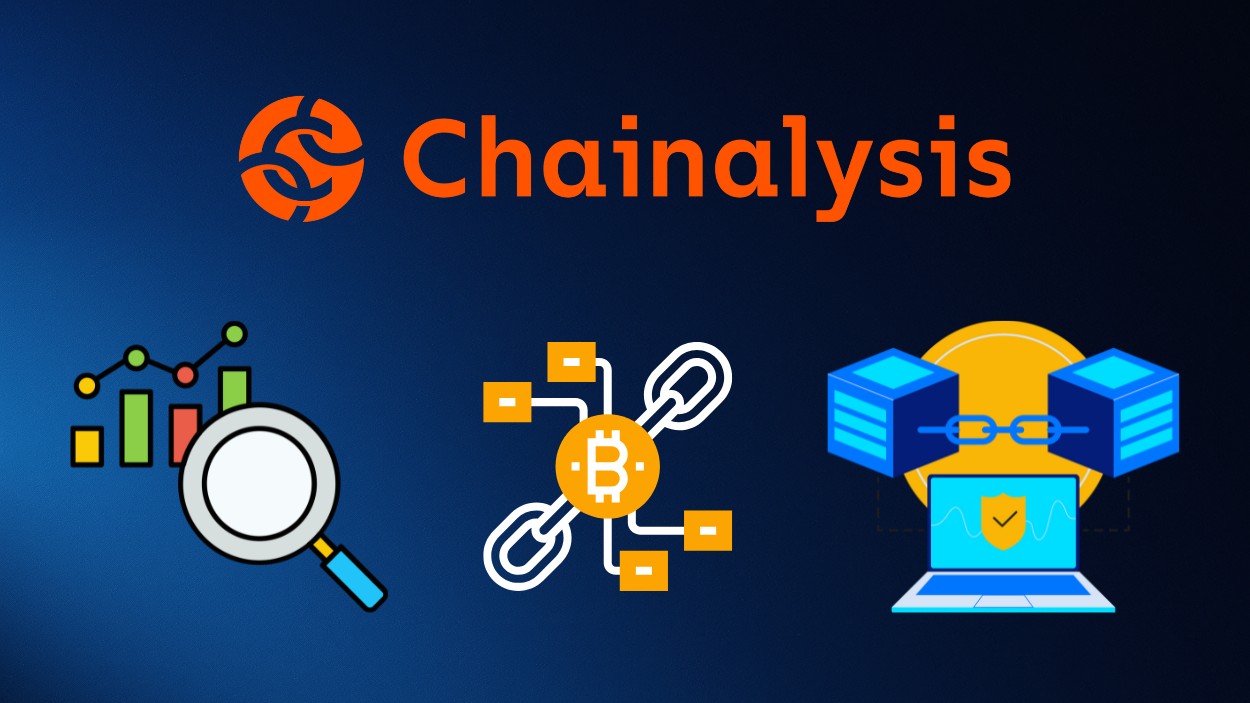In 2025, artificial intelligence (AI) continues to revolutionize industries globally, and insurance is no exception. From underwriting to customer service, AI-driven technologies are transforming how insurers operate, helping them deliver more personalized services while reducing costs. Imagine an industry where claims processing is done in minutes, not weeks, this is the promise of AI in insurance. As more companies adopt these technologies, the impact is set to reshape the landscape of risk management, customer engagement, and operational efficiency.
Editor’s Choice: Key Milestones
- By 2025, 91% of insurance companies will have adopted AI technologies.
- The global market for AI in insurance has reached $3.9 billion in 2025, rising steadily toward the projected $6.92 billion by 2028.
- AI-powered claims automation is now reducing processing time by up to 70%, saving insurers an estimated $6.5 billion annually.
- Chatbots and virtual assistants handle 42% of customer service interactions in 2025, significantly boosting efficiency and satisfaction.
- Predictive analytics has increased fraud detection rates by 28%, helping insurers recover or avoid hundreds of millions in losses annually.
- Machine learning in underwriting has improved accuracy by 54%, leading to more reliable and data-driven risk assessments.
- In 2025, 47% of insurers use AI-driven pricing models in real time, enhancing both pricing precision and profit margins.
AI in Insurance Market Growth Projections
- The AI for Insurance market is projected to grow from $7.71 billion in 2024 to $35.76 billion by 2029.
- In 2025, the market is expected to reach $10.27 billion, showing strong early growth.
- The market is forecasted to expand at a CAGR of 36.6%, indicating rapid and consistent growth.
- By 2026, the estimated value will exceed $13 billion, continuing an upward trend.
- The market is expected to surpass $30 billion by 2028, nearing its peak forecast.
This growth highlights the increasing adoption of AI technologies in the global insurance sector.
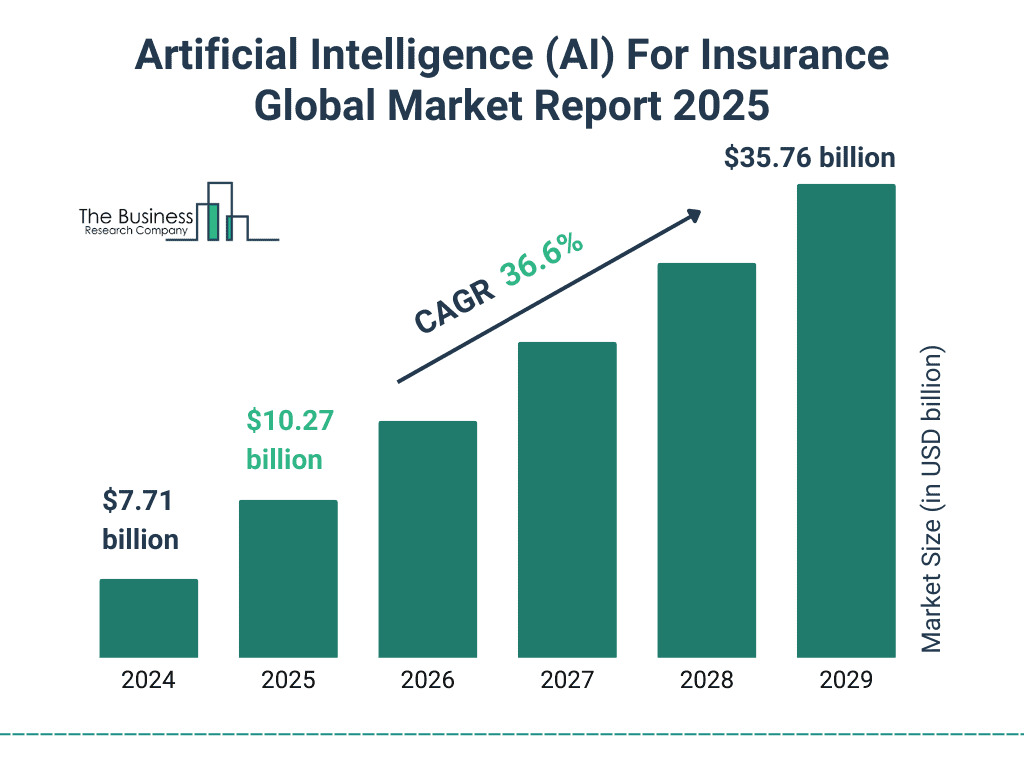
AI Adoption in Insurance
- By 2025, 83% of insurance executives are expected to prioritize AI investment in their digital transformation strategies.
- The application of AI in customer service has improved customer satisfaction rates by 15-20%, due to faster and more efficient query resolution.
- Natural language processing (NLP) technologies are automating claims processing, with leading firms reporting reductions in manual effort by 80%.
- The rise of AI-powered fraud detection tools has enabled companies to identify suspicious claims faster, reducing fraud losses by up to $44 billion annually.
- The global InsurTech market, heavily driven by AI advancements, is expected to grow at a CAGR of 16% from 2022 to 2030.
- By implementing AI underwriting systems, insurance companies have seen processing times reduced by up to 90%, from weeks to mere hours.
- Telematics and AI-powered systems in auto insurance have helped insurers offer more personalized rates, leading to 10-15% lower premiums for safe drivers.
The Evolution of AI in the Insurance Industry
- AI has evolved from basic rule-based systems in the early 2000s to advanced machine learning models that analyze vast amounts of data in real time, drastically changing how insurers assess risk.
- In 2022, over 75% of large insurance companies were already using AI for underwriting, claims processing, and fraud detection, a figure expected to rise to 90% by 2025.
- AI-powered chatbots have transformed the customer service landscape, with 20-30% of customer queries now resolved without human intervention, cutting operational costs by nearly 25%.
- Natural language processing (NLP) in insurance has advanced to the point where it can handle 90% of routine policy inquiries, helping to reduce agent workload significantly.
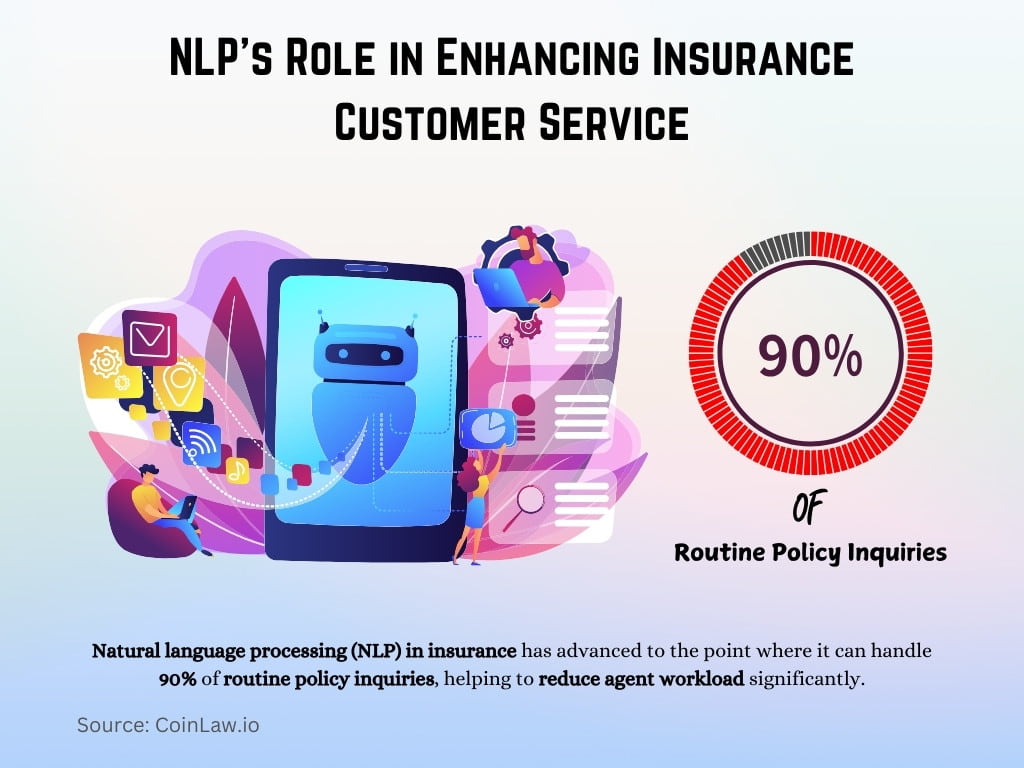
- In 2021, the use of predictive analytics in AI helped insurers improve claim accuracy by 43%, making risk assessments more precise and reducing premium pricing errors.
- Deep learning models have become essential in fraud detection, with some insurers reporting a 35% reduction in fraudulent claims using these advanced AI tools.
- AI-generated risk profiles are now helping insurers provide more customized policies, leading to a 15-20% increase in customer retention rates due to better service and pricing.
Impact of AI in Insurance
- The AI in insurance market is growing at a CAGR of 25.1% in 2025, expected to hit $11.2 billion by 2028.
- AI-powered risk models are now reducing claims leakage by over $17.4 billion annually, directly increasing insurer profitability.
- Claims automation with AI is cutting processing times by up to 73%, accelerating payouts, and driving customer retention.
- Machine learning algorithms have improved premium accuracy by 53%, enabling fairer and more customized pricing.
- AI in customer experience has boosted Net Promoter Scores (NPS) by 29%, improving loyalty and brand perception.
- In 2025, AI-enhanced life insurance models deliver precision longevity predictions, leading to more accurately priced annuities and policies.
Regional Breakdown of Generative AI Market Share in Insurance
- North America dominates the market with a 44.00% share, reflecting the region’s strong investment and adoption of AI-driven insurance technologies.
- Europe holds the second-largest share at 28.00%, driven by digital transformation and regulatory support across the continent.
- Asia Pacific accounts for 25.00% of the market, showcasing rising AI deployment in emerging insurance markets like India and China.
- Latin America represents a smaller portion with 2.40%, indicating early-stage adoption of generative AI in the insurance sector.
- Middle East & Africa contribute the least with only 0.60%, highlighting minimal penetration of generative AI in insurance in these regions.

Cyber Insurance Market Poised for Exponential Growth
- The global cyber insurance market has reached $14.8 billion in 2025, projected to exceed $29.2 billion by 2027 due to AI-driven risk modeling.
- AI-powered risk models are reducing underpricing by up to 35%, enhancing the precision of cyber policy pricing.
- In 2025, 64% of cyber insurance policies now include AI-based clauses for continuous risk monitoring and mitigation.
- Dynamic AI-backed policies are cutting premiums by 12–18% by adjusting coverage based on real-time cyber threats.
- Claims processing times have dropped by up to 65% in 2025, with AI shrinking settlement periods from months to just days.
- SME adoption of cyber insurance has surged by 52%, driven by AI tools that simplify risk evaluation and policy customization.
- 58% of insurers now use AI in cyber underwriting as of 2025, and tracking toward 75% by 2026.
AI Market Revenue Growth Worldwide
- Global AI market revenue rose from $10B in 2018 to an estimated $140B by 2025, showing rapid expansion.
- In 2019, revenue jumped to around $25B, indicating early adoption and investment.
- By 2020, it grew further to approximately $35B, reflecting steady momentum.
- Revenue crossed $50B in 2022, nearly doubling over two years.
- The market hit $75B in 2023, followed by an estimated $100B in 2024, and is forecasted to reach $140B in 2025.
This trajectory shows a tenfold growth in just 7 years, driven by AI innovation across industries.
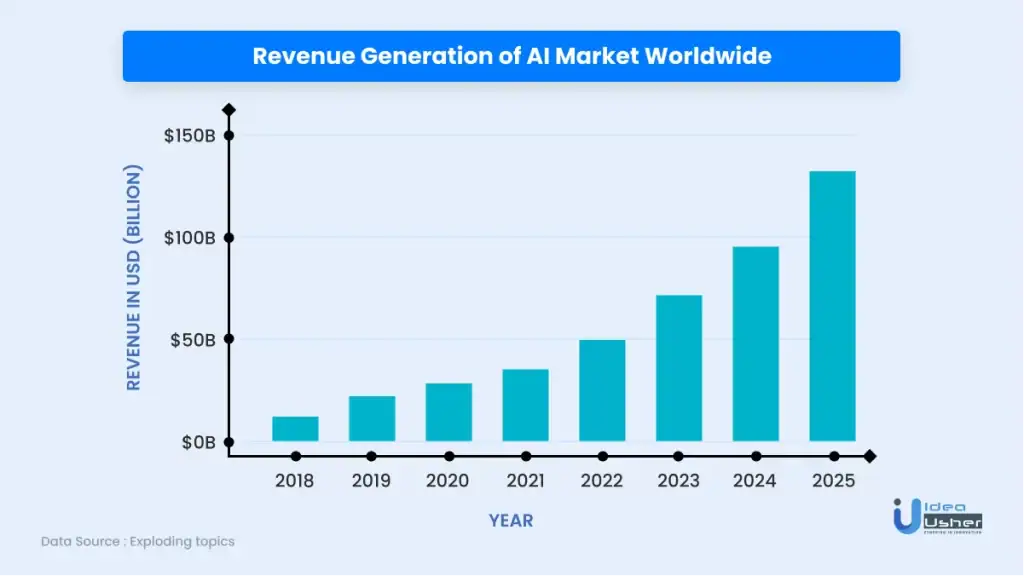
Generative AI Advances to Reshape the Cyber Risk Landscape
- In 2025, 72% of cyber insurers now use generative AI to simulate attack scenarios, enhancing vulnerability assessments across industries.
- Generative AI risk modeling has boosted cyber assessment accuracy by 27%, reducing uncertainty in complex digital environments.
- Real-time AI simulations enable dynamic policy adjustments, helping insurers respond faster to emerging cyber threats.
- Underwriting errors in cyber policies have dropped by 34% in 2025, thanks to AI-generated predictive risk scenarios.
- AI-powered threat intelligence is cutting cyber claim frequencies by up to 22%, enabling more proactive prevention strategies.
- Financial impact predictions by generative AI are now 84% accurate, improving readiness and optimizing policy structures.
- AI-driven cyber insurance solutions are propelling the market’s CAGR to 27% by 2026, reshaping how risk is forecasted and priced.
The Benefits of Using AI in Insurance Agencies
- AI has helped insurance agencies reduce administrative tasks by 30%, allowing agents to focus more on client relations and business growth.
- The implementation of AI-powered underwriting tools has decreased processing times from weeks to hours, with some insurers reporting up to 90% faster underwriting decisions.
- AI chatbots and virtual assistants have cut customer service costs by 20-40%, providing faster response times and improving customer satisfaction.

- AI-driven customer insights allow agencies to offer more personalized policies, improving customer retention rates by 15%.
- By using predictive analytics, agencies can forecast customer behavior and policy renewal likelihood, improving cross-selling and upselling rates by 10-20%.
- The use of AI-powered fraud detection tools has resulted in a 40% reduction in fraudulent claims, saving insurance companies millions annually.
- AI-driven pricing models are helping agencies adjust policy prices in real-time based on risk factors, leading to 5-10% more accurate pricing and competitive positioning.
How AI and Machine Learning are Changing the Insurance Industry
- In 2025, AI and ML enable insurers to process massive data sets in real time, driving hyper-personalized policy offerings.
- AI-based claims automation has cut human errors by 65%, accelerating workflows and improving payout efficiency.
- 68% of global insurers now use AI-driven telematics for auto insurance, enabling usage-based pricing tied to real driving behavior.
- ML in health insurance has shortened claims approval times by 42%, significantly boosting customer satisfaction.
- 24/7 AI virtual assistants have lifted policyholder satisfaction rates by 26%, transforming customer service delivery.
- AI-powered predictive modeling is reducing overall claim volume by up to 18%, enabling proactive risk management.
- ML-based fraud detection is saving the industry $47 billion annually, by swiftly flagging and preventing fake claims.
AI and ML Applications Across Insurance-Related Industries
- Manufacturing leads with an estimated 17% share, showing strong integration of AI/ML in risk assessment and automation.
- BFSI (Banking, Financial Services & Insurance) follows with 16%, highlighting AI’s role in fraud detection and claims processing.
- Healthcare accounts for 14%, leveraging AI/ML for predictive analytics and patient data management in insurance underwriting.
- Automotive & Transportation contributes 12%, using AI for telematics and accident risk profiling.
- Retail holds a 10% share, benefiting from customer insights and personalized insurance offerings.
- Others also make up 10%, covering a mix of niche applications across smaller sectors.
- Advertising & Media uses 8%, mainly for customer acquisition and engagement in insurance marketing.
- Agriculture represents 7%, and AI is integrated into crop risk analysis and rural insurance programs.
- Law has the smallest estimated share at 6%, primarily for legal compliance and automated claims disputes.
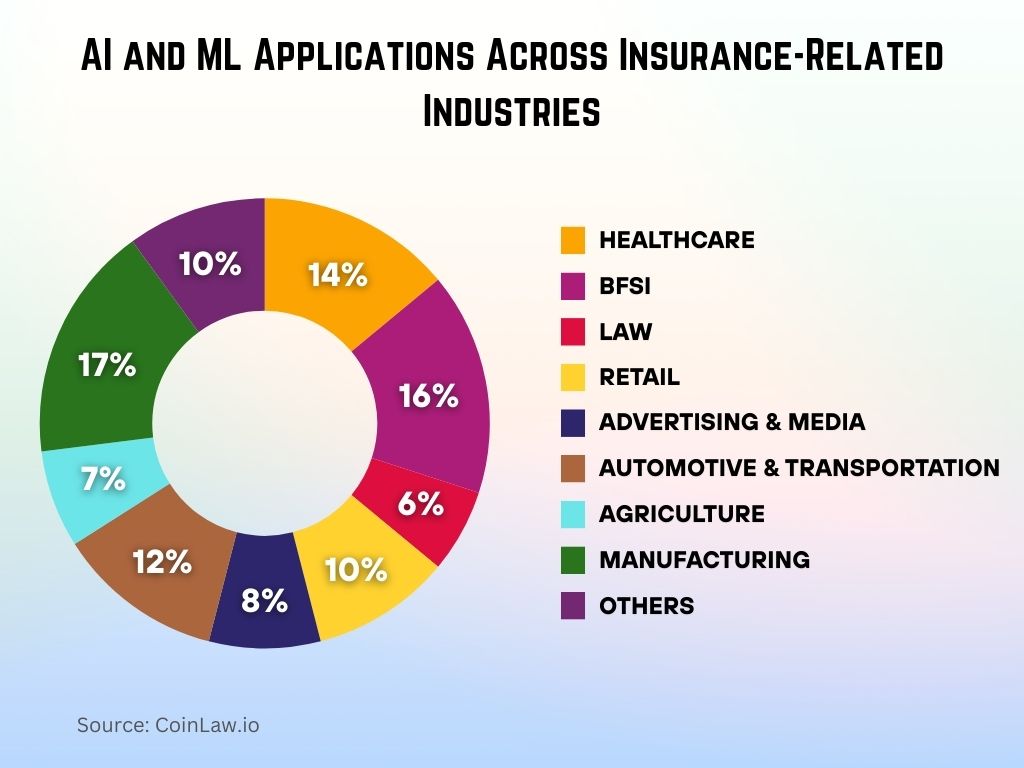
Factors Driving Adoption of AI in Insurance
- Cost reduction remains the top driver, with insurers reporting up to 35% savings from AI-powered automation and process optimization.
- In 2025, 83% of insurers will have integrated AI technologies to manage and interpret the growing volume of big data.
- 71% of policyholders now expect personalized insurance offerings, prompting insurers to use AI for individualized service delivery.
- Real-time AI compliance tools are helping insurers meet evolving regulations, reducing legal risk exposure by 22%.
- The surge of AI-native InsurTech startups has pushed traditional insurers to adopt AI rapidly to stay competitive and relevant.
- AI for cyber risk management is now a priority for 58% of insurers, driven by the spike in sophisticated digital threats.
- The insurance industry’s AI-powered digital transformation is enabling scalability with minimal manual input, boosting efficiency and growth.

Recent Developments
- In 2025, major insurers like Allstate, MetLife, and AXA have automated up to 80% of claims processing, backed by advanced AI systems.
- AI in auto insurance now powers real-time pricing for over 60% of policies, with Progressive and GEICO leading usage-based pricing via telematics.
- AI-powered aggregators serve over 45 million users globally, enhancing policy comparison, transparency, and price competitiveness.
- Wearable-integrated health insurance powered by AI is cutting healthcare costs by up to 24%, enabling dynamic, personalized premiums.
- Blockchain-AI integration is now used by 28% of insurers to improve claims transparency and cross-border efficiency.
- Drone + AI solutions are reducing post-disaster assessment time by 75%, revolutionizing property insurance inspections.
- Climate risk analytics platforms driven by AI are helping insurers adjust pricing for exposed businesses, with 38% adoption in 2025.
Conclusion
The insurance industry is entering a new era with AI at its core, transforming every aspect from customer service to risk management. As we move into 2025, the continued adoption of AI technologies will drive efficiency, reduce costs, and offer more personalized services to customers. The future of insurance will be shaped by AI innovations and companies that embrace these advancements will be best positioned to thrive in this rapidly evolving market.
Hover or focus to see the definition of the term.


